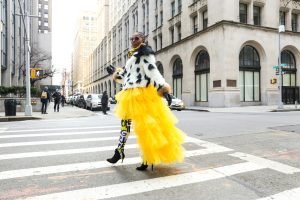The rise of upcycling and the circular fashion economy
In recent years, there has been a growing movement towards conscious consumption and sustainable living. As we become more aware of the negative impacts of fast fashion on the environment and workers in the fashion industry, people are turning to more ethical and eco-friendly alternatives. One such trend that has gained significant momentum is upcycling and the circular fashion economy. In this article, we will dive into the rise of upcycling and how it is shaping the future of the fashion industry.
What is Upcycling?
Upcycling is the practice of creatively repurposing and transforming old or discarded materials into new products with a higher value. This is different from recycling, as recycling usually involves breaking down materials to be used in the manufacturing of new products. Upcycling, on the other hand, takes items that would have otherwise been thrown away and gives them a new life through innovative design and craftsmanship.
This concept may seem relatively new, but it has been around for decades, with the first documented use of the term “upcycling” dating back to the 1990s by eco-designer Reiner Pilz. However, it has gained widespread popularity in recent years, especially in the fashion industry.
The Circular Fashion Economy
The circular fashion economy is an economic model that aims to eliminate waste and pollution by prolonging the life of clothing and materials through circularity, where waste becomes a resource. This means keeping materials in use for as long as possible, recycling and regenerating them into new products at the end of their life cycle.
In contrast, the traditional linear fashion model takes a “take-make-waste” approach, where resources are extracted, products are manufactured, and disposed of at the end of their use, creating immense amounts of waste and causing harm to the environment.
The Environmental Impact of Fast Fashion
The rise of upcycling and the circular fashion economy can be attributed to the environmental impacts of the fast fashion industry. Fast fashion refers to the mass production of trendy and inexpensive clothing, which has led to the overconsumption and disposal of billions of garments every year. This constant cycle of production and disposal has a significant toll on the environment, with fashion being one of the most polluting industries globally.
From the use of non-renewable resources, excessive water consumption, and toxic chemical use in production, to the carbon emissions from transportation and the amount of textile waste in landfills, the negative impacts of fast fashion on the planet are undeniable.
The Benefits of Upcycling and the Circular Fashion Economy
Upcycling and the circular fashion economy offer a more sustainable alternative to the traditional linear fashion model. By using discarded materials and prolonging their life cycle, they reduce the need for new materials, saving energy and resources and reducing waste and pollution.
Furthermore, upcycling and circularity also promote ethical practices in the fashion industry. As products are made from existing materials, they reduce the need for new production, leading to fewer carbon emissions and less exploitation of workers in garment factories. It also provides opportunities for small, local businesses and artisans as they can use their skills and creativity to upcycle materials into new products.
The Rise of Upcycling in the Fashion Industry
In recent years, upcycling has gained immense popularity in the fashion industry, with both established brands and emerging designers embracing this trend. Many fashion houses have launched collections using upcycled materials, and there has been an increase in upcycled clothing being sold by online retailers and in physical stores.
Additionally, upcycling has also been embraced by consumers, especially the younger generations, who are more conscious about the impact of their purchasing decisions on the planet. With a growing demand for sustainable and ethical fashion, upcycling provides an environmentally friendly option for consumers to support.
The Challenges and Future of Upcycling in the Fashion Industry
While upcycling and the circular fashion economy offer immense potential for a more sustainable and ethical fashion industry, there are also challenges that need to be addressed. One of the main challenges is the scalability of upcycling, as it can be a time-consuming and labor-intensive process. As the demand for upcycled products increases, there may be a need for new technology and innovation to make the process more efficient.
However, with consumers’ growing demand for sustainable and ethical fashion, the future looks bright for upcycling. As more and more designers and fashion brands incorporate upcycling into their production processes, it has the potential to become a mainstream trend, leading to a more circular and sustainable fashion industry.
In Conclusion
The rise of upcycling and the circular fashion economy is a significant step towards a more sustainable and ethical fashion industry. By reducing waste, saving resources, and promoting ethical practices, upcycling has the potential to transform the way we produce and consume fashion. As consumers, we can support this trend by choosing to invest in upcycled products and being more conscious about our fashion choices. It is time for us to embrace the shift towards sustainable and circular fashion and be a part of the solution to create a better future for our planet.










